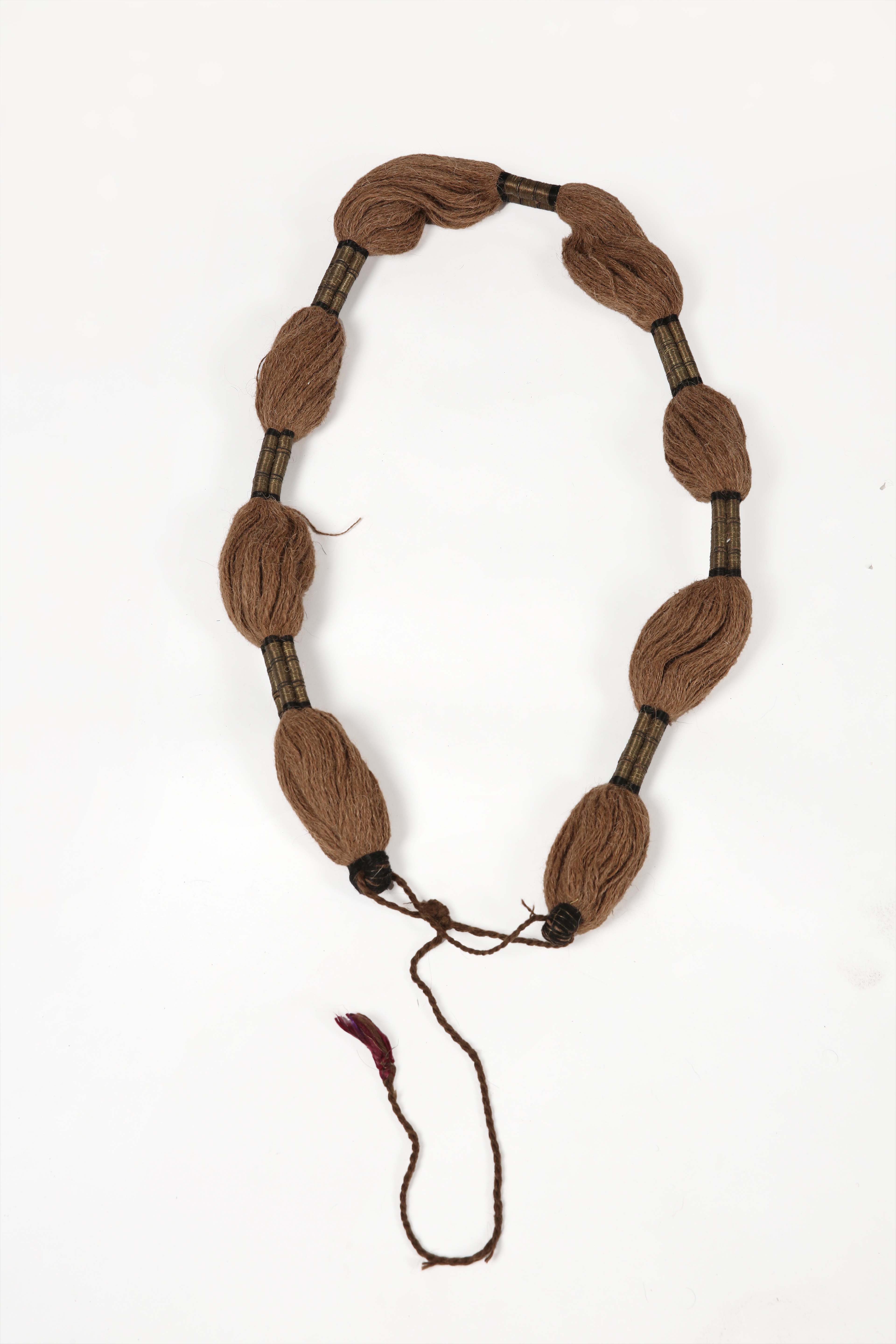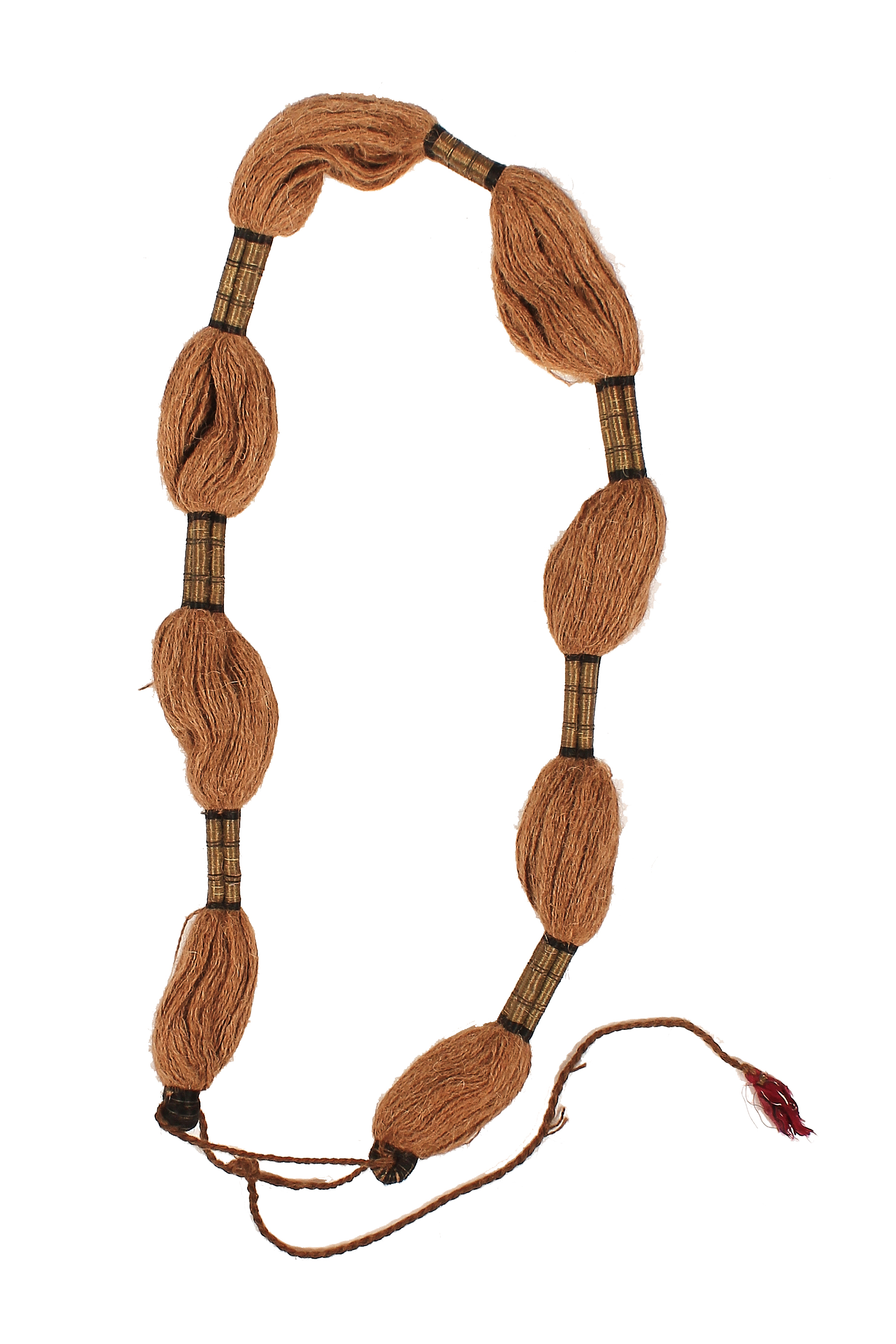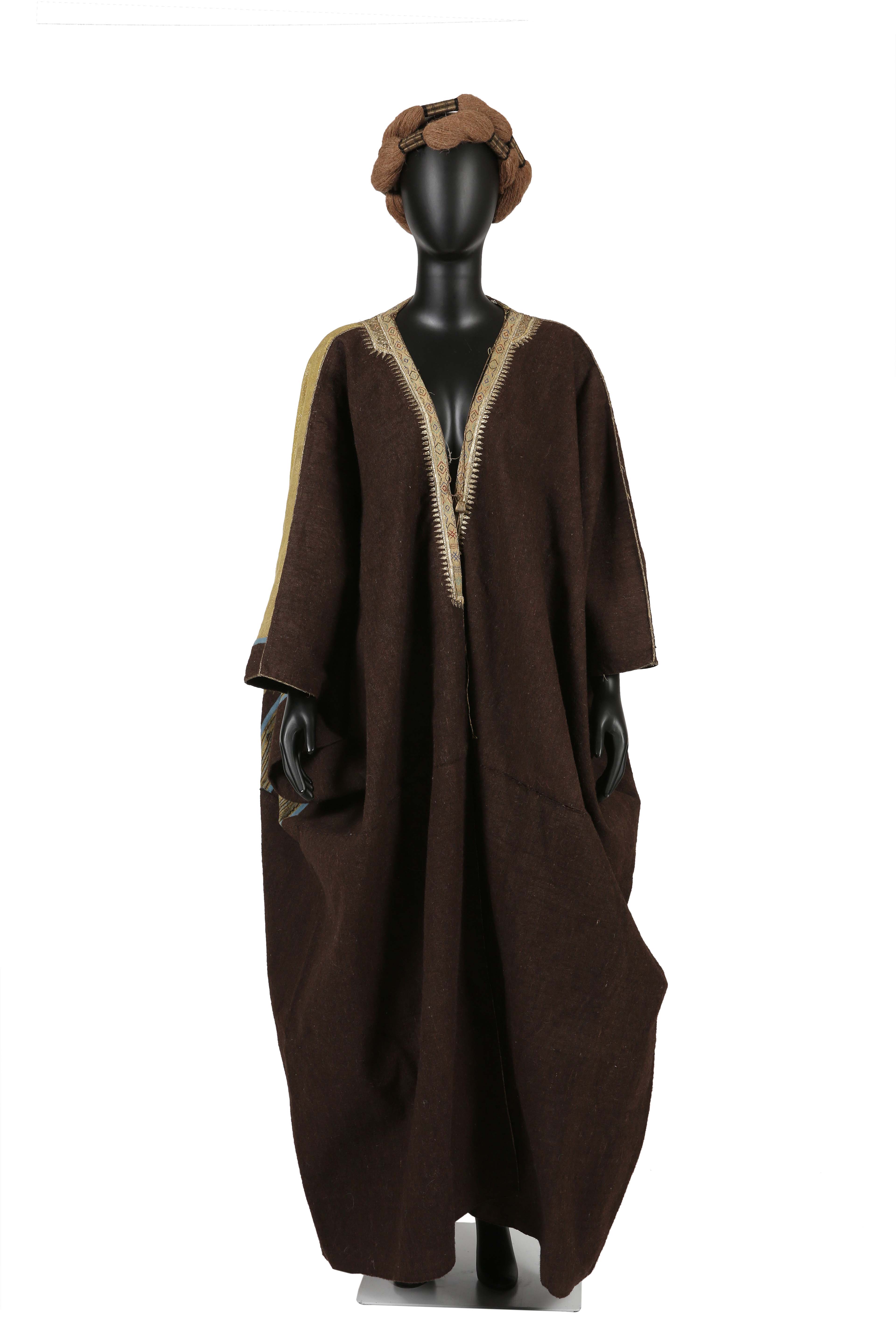






| Local Name | ‘igal |
| Object Category | Accessory |
| Gender | Male |
| Date of object | 1900s |
| Place Of orgin | Syria |
| Region | Syria |
| Object Range | Syria, Jordan, Palestine, Iraq, Saudi Arabia, Bahrain, Emirates, Kuwait, et al. |
| Dimensions | 53 cm circumference |
| Materials | Metal Animal Hair Silk |
| Technique | Other |
| Color | |
| Provenance | Purchased, Kerry Taylor Auction, London 2019 |
| Location | The Zay Zay: (Arabic: costume, Pl. azyaā’), a set of clothes in a style typical of a particular country or historical period. Initiative |
| Status | In storage |
| ZI number | ZI2019.500742.1a SYRIA |
Object Note
Part of a set with another item (ZI2019.500742a SYRIA) also in the collection.
Object History
This piece was purchased by Dr. Reem Tariq
Ṭariq: (Arabic; Synonym: tulle_bi_talli; talli; badla; khus_dozi ), series of small metal knots made on a woven net ground as embellishment. The term is commonly used in the Levant Arab region specifically in Lebanon. Ṭariq: (Arabic; Synonym: tulle_bi_talli; talli; badla; khus_dozi ), series of small metal knots made on a woven net ground as embellishment. The term is commonly used in the Levant Arab region specifically in Lebanon.
A seasoned auctioneer with experience from one of London’s most famous auction houses and more than 40 years in this business, Ms. Taylor is not just the founder of Kerry Talor Auctions but also an honourable member of the advisory board of The Zay Zay: (Arabic: costume, Pl. azyaā’), a set of clothes in a style typical of a particular country or historical period. Initiative.
Object Description
This is a men’s traditional headband (‘igal) made of undyed camel hair bound in bundles in seven segments.
The segments are further divided into four thin cylindrical parts adorned with black silk and metal possibly gold threads. The two ends of the band are looped around each other making it a circle.
The wearer would usually twist it in two layers before placing it on their head and then tighten it with the help of the looped ribbon at the end.
More Info
The shatfah
Shatfah: (Arabic; Synonym: aqal, oqal, igal and other regional dialect and spelling variations, mgassab, faisaly), a looped headband often traditionally constructed of animal hair, later silk in corded fashion and gilded silver straw worn by Arab men of affluence as status symbol to keep their head scarves in place.
While the latter served as a ceremonial ornament, the shatfah
Shatfah: (Arabic; Synonym: aqal, oqal, igal and other regional dialect and spelling variations, mgassab, faisaly), a looped headband often traditionally constructed of animal hair, later silk in corded fashion and gilded silver straw worn by Arab men of affluence as status symbol to keep their head scarves in place.
Traditionally, shatfah
Shatfah: (Arabic; Synonym: aqal, oqal, igal and other regional dialect and spelling variations, mgassab, faisaly), a looped headband often traditionally constructed of animal hair, later silk in corded fashion and gilded silver straw worn by Arab men of affluence as status symbol to keep their head scarves in place. Shatfah: (Arabic; Synonym: aqal, oqal, igal and other regional dialect and spelling variations, mgassab, faisaly), a looped headband often traditionally constructed of animal hair, later silk in corded fashion and gilded silver straw worn by Arab men of affluence as status symbol to keep their head scarves in place.
The concept of the modern-day shatfah
Shatfah: (Arabic; Synonym: aqal, oqal, igal and other regional dialect and spelling variations, mgassab, faisaly), a looped headband often traditionally constructed of animal hair, later silk in corded fashion and gilded silver straw worn by Arab men of affluence as status symbol to keep their head scarves in place.
The term (faisaly
Faīṣaly: (Arabic - headband; Synonym: iqal, oqal
Oqal: (Arabic - headband; Synonym: igal, iqal, mgassab, mqassab
Mqaṣṣab: (Arabic - headband; Synonym: iqal, oqal, igal, mgassab, shatfah
Shatfah: (Arabic; Synonym: aqal, oqal, igal and other regional dialect and spelling variations, mgassab, faisaly), a looped headband often traditionally constructed of animal hair, later silk in corded fashion and gilded silver straw worn by Arab men of affluence as status symbol to keep their head scarves in place. Shatfah: (Arabic; Synonym: aqal, oqal, igal and other regional dialect and spelling variations, mgassab, faisaly), a looped headband often traditionally constructed of animal hair, later silk in corded fashion and gilded silver straw worn by Arab men of affluence as status symbol to keep their head scarves in place. Mqaṣṣab: (Arabic - headband; Synonym: iqal, oqal, igal, mgassab, shatfah
Shatfah: (Arabic; Synonym: aqal, oqal, igal and other regional dialect and spelling variations, mgassab, faisaly), a looped headband often traditionally constructed of animal hair, later silk in corded fashion and gilded silver straw worn by Arab men of affluence as status symbol to keep their head scarves in place. Shatfah: (Arabic; Synonym: aqal, oqal, igal and other regional dialect and spelling variations, mgassab, faisaly), a looped headband often traditionally constructed of animal hair, later silk in corded fashion and gilded silver straw worn by Arab men of affluence as status symbol to keep their head scarves in place. Shatfah: (Arabic; Synonym: aqal, oqal, igal and other regional dialect and spelling variations, mgassab, faisaly), a looped headband often traditionally constructed of animal hair, later silk in corded fashion and gilded silver straw worn by Arab men of affluence as status symbol to keep their head scarves in place.
Links